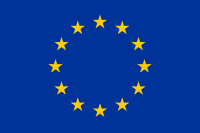What is Change Impact Assessment Framework
Introduction to the Framework
About this process
This process belongs to Change Impact Assessment Framework
Introduction to the Framework
What is Change Impact Assessment Framework
The EU Work Plan for Culture 2023-2026, the document adopted by the Council of Culture Ministers of the European Union which shapes EU cooperation on culture for the next 4 years, focuses on 4 priorities among which are the enhancement of cultural participation and the role of culture in society are preeminent. Moreover, among the 21 main actions proposed, access to culture, cultural participation and democracy are issues of high relevance.
In light of these collective objectives, inDICEs developed the “Change impact assessment framework" - a tool for orienting the cultural sectors toward evaluating the impacts of active cultural participatory activities.
Change Impact Assessment Framework aims at raising awareness among cultural heritage institutions (CHIs) about the importance of designing for the impact that active cultural participation in the digital sphere can have on participants.
The framework is based on the Culture 3.0 perspective where cultural participation is perceived as impactful when there is collective proactivity and when it regards democratic processes of co-creation. Even if active cultural participation and co-creation can generate impressive positive impacts and literature proves that it is the best strategy to contribute to societal wellbeing, it is still rarely observed in the digital activities of European cultural heritage organisations.
This framework aims to motivate the cultural heritage sector to consider the importance of understanding and evaluating the impacts of active cultural participation in the digital realm.
Who is it for the Change Impact Assessment For?
The Change Impact Assessment Framework is addressed to professionals in the cultural heritage sector who are eager to:
- Renew their approach to participatory cultural activities in relation to the digital sphere
- Understand their status in terms of digital transformation and participation
- Rethink their role in communities’ orchestration, from the early stages of the planning to the assessment part
- Implement innovative strategies of digital active participation that help CHIs implement their public mission
- Consider new potential areas of impact in their strategies for impact measurement





Share: